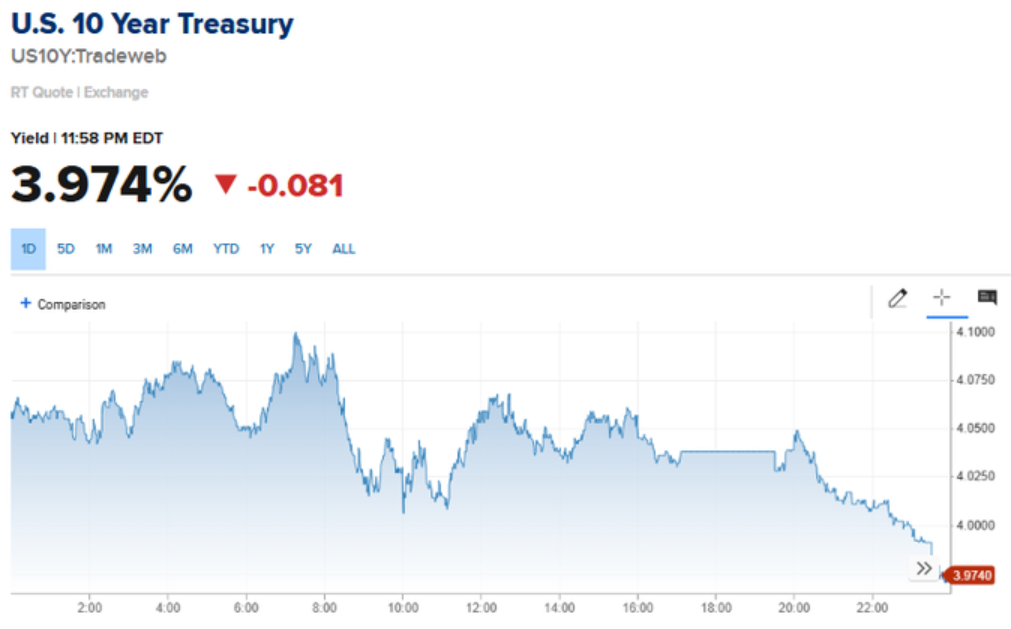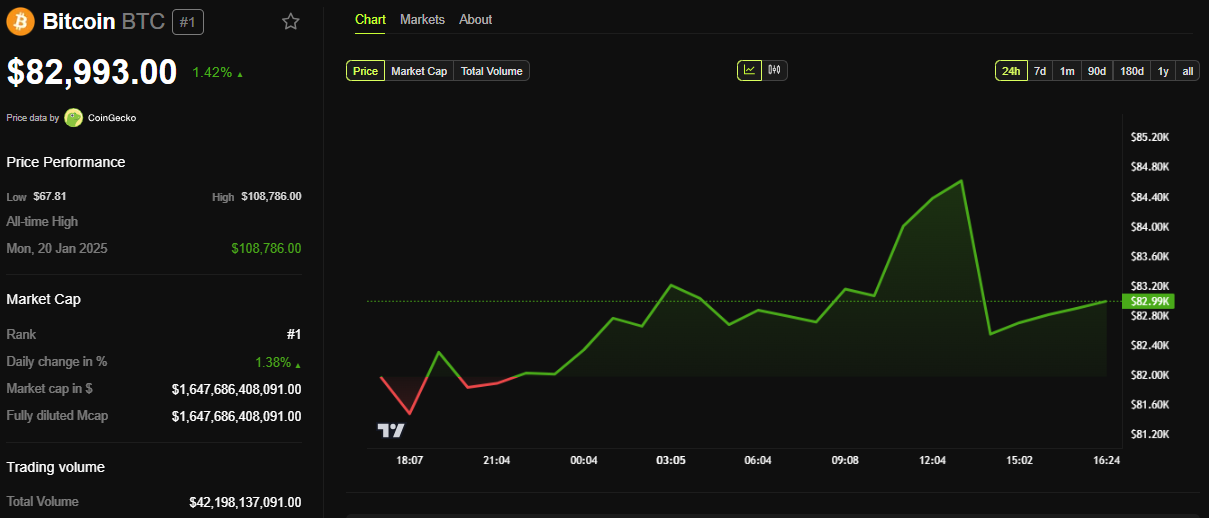-
The recent drop in the US 10-year Treasury yield below 4% suggests significant shifts in monetary policy, affecting risk assets like Bitcoin and altcoins.
-
This decline in yields historically signals a risk-on sentiment, with investors diversifying into cryptocurrencies for greater returns amidst economic uncertainty.
-
Dan Gambardello stated, “The irony is that when yields fall, there’s less reason to sit in ‘safe’ bonds and more reason to chase returns in risk assets like BTC.”
The US 10-year Treasury yield has dipped below 4%, hinting at potential Fed rate cuts, which may boost Bitcoin’s appeal amid rising risk appetite.
Treasury Yields and Bitcoin: A Risk-On Rotation?
The recent decline of the US 10-year Treasury yield marks a significant moment in financial markets, reflecting heightened economic uncertainty. This drop is interpreted as aligning with increasing recession fears and speculation regarding the Federal Reserve’s potential pivot towards rate cuts.

A fall in Treasury yields tends to undermine traditional safe-haven investments like bonds, prompting investors to seek higher returns in alternative assets, notably Bitcoin and various altcoins. As noted by crypto analyst Dan Gambardello, this correlation stems from the relationship between declining real yields and increased liquidity that flows into riskier investments.
Gambardello elaborated, “Lower yields are bullish for Bitcoin, aligning with expectations that a dovish Fed will drive liquidity into riskier assets.” This statement highlights the optimistic sentiment surrounding Bitcoin’s performance as economic conditions shift.
Former BitMEX CEO Arthur Hayes also emphasized this dynamic, noting that the reduction in the 2-year Treasury yield following recent tariff announcements underscores market expectations of imminent Fed rate cuts. “We need Fed easing, the 2yr treasury yield dumped after the Tariff announcement because the market is telling us the Fed will be cutting soon,” he argued, indicating a potential for policy adjustments that could benefit Bitcoin.
The Trump Factor: Tariffs and Market Volatility
Furthermore, analysts have linked the recent yield decline to economic uncertainty stemming from former President Trump’s tariff strategy. These tariffs have incited a flight to safety, raising bond prices and consequently lowering yields. This response fits within Trump’s historical tendency to favor a weaker dollar and lower interest rates to stimulate economic growth.
Kristoffer Kepin noted that the M2 money supply is on the rise, reinforcing expectations that increased liquidity will flow into cryptocurrencies as investors search for alternative value stores during turbulent economic times.
Despite Bitcoin’s potential gains, traditional asset classes like gold and the Japanese yen are still being favored as safer options against US recession risks. Goldman Sachs highlighted this preference, stating that gold offers historical resilience in risk-off environments. According to reports, Kamakshya Trivedi from Goldman Sachs pointed out, “The yen offers investors the best currency hedge should the chances of a US recession increase.”
This sentiment was echoed in a recent survey by Bank of America, where 58% of fund managers expressed a preference for gold as a safe haven compared to a mere 3% for Bitcoin.
Add to this, JPMorgan’s raised global recession probability has reached 60%, linking it directly to the economic impact of Trump’s tariff launches. Bruce Kasman, head of global economic research at JPMorgan, noted, “These policies, if sustained, would likely push the US and possibly global economy into recession this year,” bringing a cautious tone to optimistic cryptocurrency forecasts.
While a scenario where global economies manage through a US recession is conceivable, experts agree the probabilities point towards a broader economic downturn. As Treasury yields continue on a downward trajectory, investor focus now turns towards the Fed for indications of potential policy changes.
Should rate cuts and liquidity injections materialize, Bitcoin may well experience substantial gains, especially as traditional assets undergo repricing. Nevertheless, market experts warn against short-term volatility threats that persist amid these transformative financial shifts.

As of this writing, Bitcoin trades around $82,993, reflecting a modest increase of 1.42% within the last 24 hours, inherently indicative of shifting risk sentiments in the market.
Conclusion
In summary, the recent decline in US Treasury yields signals a pivotal moment for Bitcoin and risk assets, driven by evolving economic conditions and potential shifts in Fed policy. Investors are closely watching market trends, as enhancements in liquidity could further tilt the balance in favor of cryptocurrencies, despite ongoing volatility. The interplay of traditional and digital assets will be crucial to watch in the coming months.
